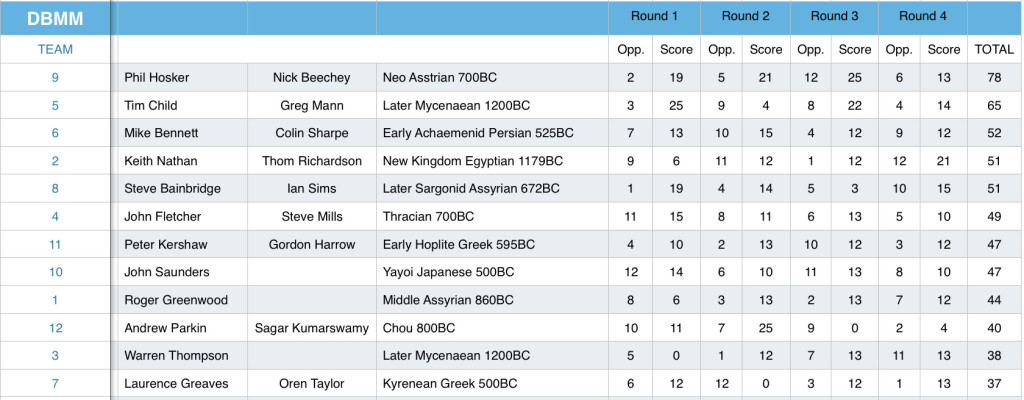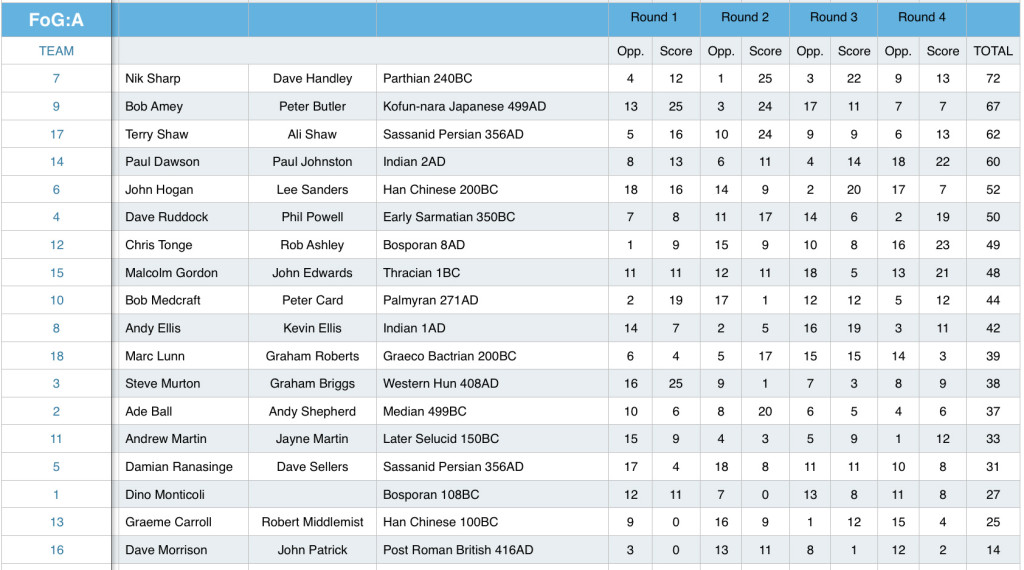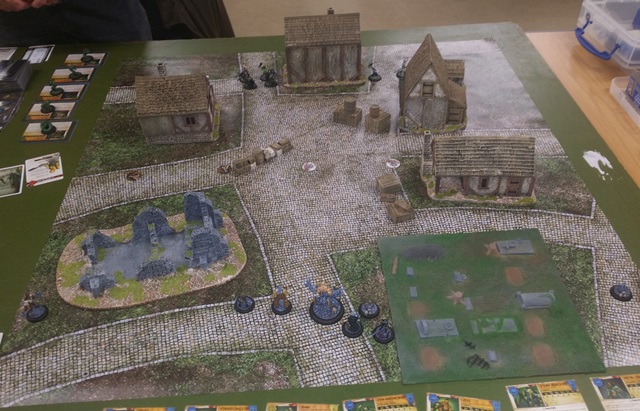The latest FOG:R refight involving the Swedes and Danes took place at the club recently. Helsingborg was a little different from most of these encounters as the Swedes were not heavily outnumbered and the Danes were not heavily outclassed.

The superbly confident army that Charles XII had led deep into Russia had been destroyed at Poltava in 1709, and their inspirational king was in exile in Turkey. The Danes saw another chance to reclaim their lost provinces in southern Sweden. They had been forced out of the Great Northern War early on, but had been far from idle. They had loaned out many troops to the maritime powers of Britain and the United Provinces and they had seen action in Ireland, Germany and Spain.
At the end of 1709 the Swedes had only around 1,500 troops available to counter any Danish attack. The Danes assembled an invasion force of 14,000 and rapidly took all of southern Sweden apart from Landskrona and Malmo with the latter under siege. Under General Stenbock the Swedes raised and trained a new army over the winter of 1709/10, and by early February he was ready to make a move on Helsingborg to try and cut the Danish supply lines.
Fearing being trapped between the Swedish army and the Malmo garrison the Danes marched towards Helsingborg where they could pick up reinforcements. On the freezing, foggy morning of February 28th the two forces met outside the town. The Swedes had around 8,500 infantry and 5,500 cavalry; the Danes around 10,000 infantry and 4,000 cavalry.

The fog had hidden each side’s dispositions from the other. The Danes had their cavalry wings (including some infantry and mounted dragoons) on high ground, with their infantry in two lines on the low ground in between. The Swedes had also formed up with two infantry lines in their centre and two equal cavalry wings. They advanced across low lying marshland, cut with ditches and stone walls, but the frozen ground lessened the difficulties these could have presented. When the fog lifted they also found they outflanked the Danish left and were approaching at an angle, with their right wing far closer to the Danish line than their left.

The Danes rushed to reinforce their left to avoid being outflanked but the main enemy advance came on the right as the Swedes swung round to line up against them. This meant the Swedish left wing cavalry moved well out further to the left, potentially cutting off the road to Malmo. The Danish general Rantzau (a veteran of Marlborough’s campaigns) rushed across and took personal command of the right wing, ordering them down from the high ground to counter this perceived threat. At first the Danes were successful, but Swedish reinforcements and a serious wound to Rantzau turned the tide.

Rantzau’s advance had also opened up gaps in the Danish line as their infantry were unsure whether to hold their position or advance. As the Swedish infantry advanced to engage them rumours spread amongst the Danish army that they were being encircled and panic set in. Their Guards and Grenadiers fought well to cover the retreat of the rest of the Danish infantry, but the left flank was now under threat as well. Here the commander von Dewitz had also been ordered across to help on the opposite flank and the now leaderless Danes soon succumbed to the ferocious Swedish cavalry attack.
The retreat became a rout and the Danes ran in headlong flight back to Helsingborg where they were besieged by the Swedish army.

They were eventually forced to abandon the city in early March having lost over half of their invasion force and their final attempt to regain their lost provinces in southern Sweden.
In the club refight the commanders were:
Swedish right wing cavalry: Steve
Swedish infantry centre: Richard
Swedish left wing cavalry: Pete
Danish left wing: Paul
Danish centre: Simon G
Danish right wing: Dene
Although the Swedish army had been raised more or less from scratch it was still trained in the usual tactic of impact cavalry and salvo infantry. Not all of the new Swedish infantry regiments were provided with pikemen. To simplify matters the front line were classed as mixed units and the rear line as all musket.

The Danish may have had some artillery on the heights on their left flank, but it had to be repositioned when the Swedish deployment was revealed and did not play a major part. As it can have a significant effect in FOG:R (especially on cavalry) I gave the Danes a couple of guns in reserve behind the heights. This kept it out of immediate use but could be deployable if the Swedish cavalry swept round the flank. The Danes also had the only superior infantry on the battlefield – the Guards and the Grenadiers.
The Swedes began the game with a compulsory double move to swing their left wing round to line up more with the Danish right wing – as happened historically. However their cavalry did not move too far out to the left, preferring to keep in close contact with their infantry, and their right wing cavalry also advanced to try and take an early advantage. The Danes responded with a large and frantic redeployment on their left and centre to reinforce the heights and prevent a Swedish flanking manoeuvre. On the right there was no immediate threat so Rantzau was not forced to move across and the Danes held their position on the hills.

The right flank Swedish cavalry edged round the flank of the Danish positions, forcing them to turn to face. If this flank was to be successfully turned it would need an uphill charge. Steve duly obliged in the Swedish ‘ga pa’ style. Meanwhile the Swedish centre and left flank advanced steadily, the cavalry still keeping close to the infantry. This gave the Danish right a chance to threaten the Swedish left flank and they duly came down from their hilltops to engage. The Swedish cavalry now turned and swung out to their left to meet this threat. This could have triggered Rantzau to rush to the right flank and take personal command as happened historically, but events on the left flank took precedence.

The Danish dragoon unit on the extreme left chose to pull back and secure the flank rather than engage in melee. The rest of their horse struggled to hold the Swedish cavalry who had great success with their initial uphill charge, winning most of the impacts. Much of this was visible to the Danish infantry next in line on the hill and rumours spread of a collapse on the left flank (in the shape of a failed cohesion test). This triggered Rantzau’s rush to take command of the left flank rather than the right. The situation was eventually stabilised and turned round on the Danish left as the Swedish cavalry ran out of steam and collapsed when their general was killed.
On the other wing the Swedish cavalry again had the best of the early melee, even fragmenting the Danish Guard cavalry, but here too the Danes eventually got the upper hand and the Danish Guard distinguished themselves by rallying up twice.

The Swedish infantry in the centre had continued their advance on the Danish centre, still in perfect order with the lack of any enemy artillery fire. As they closed the withering fire of the Danish muskets and battalion guns broke three of the Swedish units in the front line but the other three passed all their tests and charged in. In the impact the Danish Guard were routed and the adjacent unit panicked and followed in the next melee round. With both cavalry wings losing out and the evening’s gaming drawing to a close continued Swedish success in the centre was vital. The last Swedish unit was led into melee by Stenbock in person; they were held to a bloody draw and with the last dice roll of the evening the Swedish general fell and victory was awarded to the Danes. It was the Swedes who had been to hell and back.
















